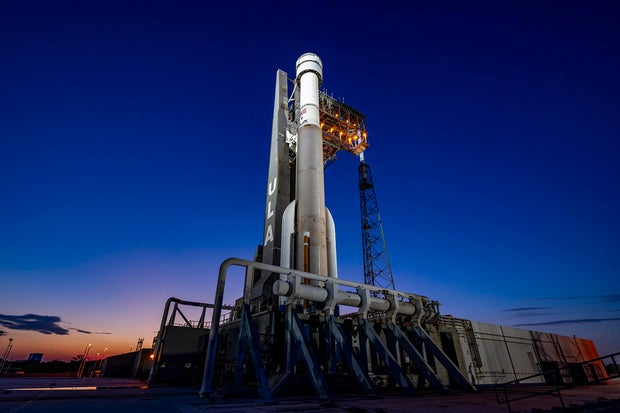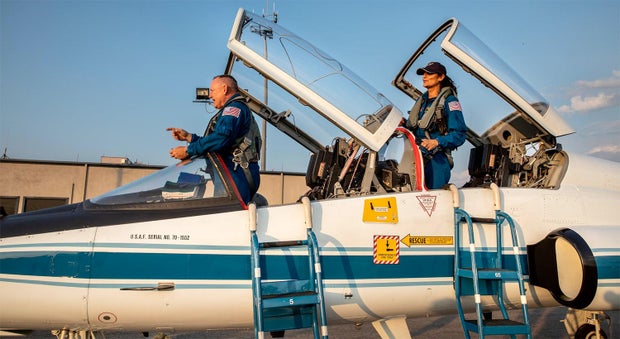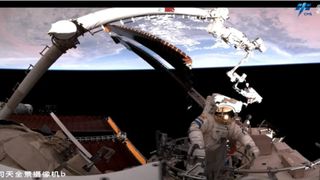All systems are "go" for a second attempt to launch Boeing's oft-delayed Starliner crew ship Saturday on a long-awaited test flight to the International Space Station, the capsule's first with astronauts aboard, NASA managers said Friday.
"From a station standpoint, from our crew, from our ground teams, we are ready to go fly this mission," said Dana Weigel, manager of NASA's space station program. "We're excited that we are on the doorstep of this historic mission."
Liftoff of the Starliner atop a United Launch Alliance Atlas 5 rocket is targeted for 12:25 p.m. EDT Saturday, roughly the moment Earth's rotation carries pad 41 at the Cape Canaveral Space Force Station into alignment with the station's orbit.
ULA engineers are expected to start fueling the rocket around 6:30 a.m. Veteran NASA astronauts Barry "Butch" Wilmore and Sunita Williams, acting as commander and co-pilot respectively, plan to strap in three hours later to await liftoff.
It will take the Atlas 5 about 12 minutes to propel the Starliner into orbit, kicking off a 25-hour rendezvous with the space station. Docking is expected at 1:50 p.m. Sunday. If all goes well, Wilmore and Williams will undock and return to Earth on June 10, landing that morning at a desert site in Arizona or New Mexico depending on the weather.
"I've talked to them, and they have every confidence in our rocket, they have every confidence in our spacecraft, in our operations teams and in our management teams," said astronaut Mike Fincke, training to command a Starliner mission next year. "They are definitely ready to go."
Speaking of being ready to "go," the Starliner will be carrying a urine processor pump module that was added at the last minute to replace one that failed aboard the station earlier this week. To make room for the 150-pound component, some of the crew's clothing and other personal items were taken off the ship, but generic clothing is stored aboard the lab and no problems are expected.
"The two specific suitcases that came off had clothes for both Butch and Sonny in them and also some ... of their own unique hygiene materials," Weigel said. "Of course, we have generic shampoo, soaps, etc., on board that they can just use from the generic supplies. Same with clothing, and so that's what they'll do."
The Starliner's long-awaited flight marks a major milestone in NASA's Commercial Crew Program, which funded the development of SpaceX's Crew Dragon ferry ships and Boeing's Starliner to provide post-shuttle transportation to and from the space station without having to rely on Russia for rides aboard the Soyuz spacecraft.
From the beginning, NASA wanted spacecraft from different vendors to ensure uninterrupted access to the space station even if problems grounded one ferry ship for an extended period.
SpaceX began flying astronauts aboard Crew Dragon ships in 2020 and has now carried 50 astronauts, cosmonauts and civilians into orbit in 13 flights. Boeing's Starliner, in contrast, has suffered a steady stream of problems that have delayed the first piloted flight by four years, costing the company more than $1 billion to correct.
Wilmore and Williams were finally cleared for launch on May 6. They were in the process of strapping in for takeoff when ULA engineers reported problems with a relief valve used to maintain the proper pressure in an oxygen tank inside the rocket's Centaur upper stage. Not comfortable with the valve's performance, mission managers ordered a scrub.
The Atlas 5 was hauled back to ULA's Vertical Integration Facility where a replacement valve was installed, tested and cleared for flight. In the meantime, Boeing engineers were assessing data collected after the scrub that indicated a small helium leak in plumbing used to pressurize the Starliner's propulsion system.
The leak eventually was traced to the plumbing leading to a specific reaction control system jet, one of 28 such thrusters mounted around the Starliner's drum-shaped service module. After extensive tests and analysis, mission managers concluded the spacecraft could safely fly as is with no credible threat to flight safety.
If the leak drastically worsened in flight, the helium manifold in question would be isolated, disabling its thrusters. That would prevent a normal re-entry using more powerful thrusters at the end of the mission, but backup plans are in place to carry out the de-orbit "burn" using two long firings of unaffected RCS jets.
Article From & Read More ( Boeing's Starliner ready for Saturday launch to space station, first flight with crew on board - CBS News )https://ift.tt/dkX0Zhr
Science




:format(webp)/cdn.vox-cdn.com/uploads/chorus_asset/file/25470559/Camera_being_tested_pillars.jpg)
:format(webp)/cdn.vox-cdn.com/uploads/chorus_asset/file/25470563/Hera_mission_timeline_pillars.jpg)










